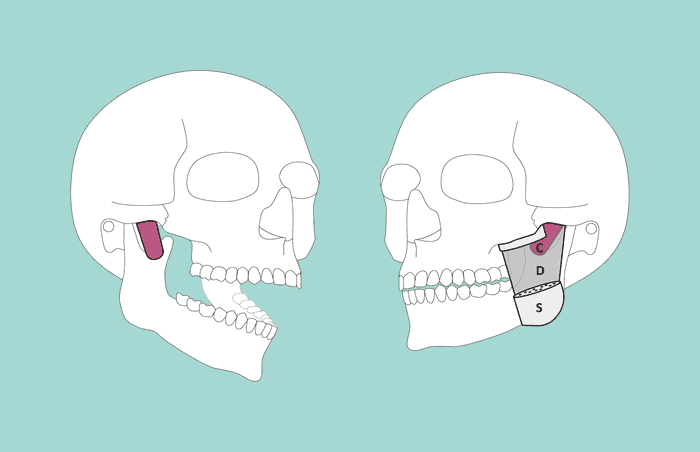Textbooks and studies alike state categorically that the masseter muscle in the jaw consists of two layers: one superficial and one deep part . This longheld belief has now been quashed by the discovery of a further layer directly underneath the deep part of this musculature.

Rewriting anatomy books
The University of Basel has performed extensive dissection in human specimens to identify the fabled ‘third’ layer of the masseter muscle – which connects the mandible or lower jaw to the skull and is critical for chewing. The study, published in the Annals of Anatomy, proposes that the structure be given the name “Musculus masseter pars coronidea or the coronoid section of the masseter” – because it’s attached to the lower jaw’s coronoid process, a bony projection that aids in mastication.
Dr. Szilvia Mezey, the lead author from the University of Basel, explains that “this deep section of the masseter muscle is clearly distinguishable from the two other layers in terms of its course and function.” She adds that the arrangement of the muscle fibers suggests that this layer is involved in stabilizing the lower jaw and appears to be the only part of the masseter that can pull it back towards the ear.
The masseter is a major muscle of mastication that tightens when you clench your teeth, whose structure has already raised questions. For instance, an edition of Gray’s Anatomy from 1995 describes the muscle as having three layers, although the referenced studies used non-human species. Still, these peer-reviewed animal trials were sturdy enough to cause much speculation.
To end this uncertainty, the team began an intricate anatomical investigation. Firstly, the group dissected 12 human cadaver heads preserved in formaldehyde. After this, they used computerized tomography to produce highly detailed internal images of 16 fresh cadavers, with each image representing a slide of only 0.6mm thickness. Finally, the scientists compared these thin slices with magnetic resonance imaging of a living person, which produced a detailed picture of the masseter muscle and connective tissues to give an overall view of the new layer.
These examinations revealed an anatomically distinct third layer of the masseter muscle. The first complete description of this muscle involves a layer possessing a separate nerve and blood supply that begins at the zygomatic process – a bony projection that forms part of the cheekbones. The study goes on to describe a narrow, elongated, rectangular shape that runs down to the coronoid process, a triangular protrusion on the mandible.
Due to the direction of its fibers and the position of its attachments, the team suggests that this layer provides further stabilization of the lower jaw, making it an essential part of the masseter muscle.
Dr. Jens Christoph Türp, professor at the University Center for Dental Medicine Basel, concludes:
“Although it’s generally assumed that anatomical research in the last 100 years has left no stone unturned, our finding is a bit like zoologists discovering a new species of vertebrate.”
In addition to adding a better understanding of the human body, the team notes this new knowledge could be useful in the short-term, by helping improve treatments for conditions involving the jaw.


